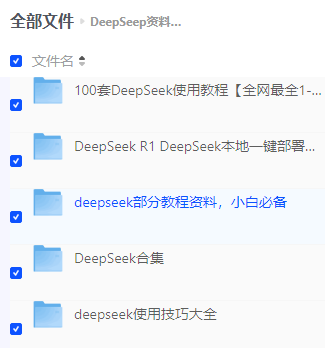EdgeX(5)使用Python 进行服务的注册,参考github 上面的项目,通过API 服务进行注册。
目录
- 前言
- 1,关于EdgeX Python
- 2,项目说明
- 3,总结
前言
相关EdgeX Foundry 全部分类:
https://blog.csdn.net/freewebsys/category_9437788.html
本文的原文连接是:
https://blog.csdn.net/freewebsys/article/details/107606848
未经博主允许不得转载。
博主地址是:http://blog.csdn.net/freewebsys
1,关于EdgeX Python
EdgeX 有 golang 的和 c的 SDK,但是目前没有 python 的服务。
需要自己折腾。还好万能 的GITHUB 上面有人已经研究了。
https://github.com/jonas-werner/EdgeX_Foundry-Device_Creation
2,项目说明
特别简单,一个python 脚本。
egfCreateEndpoint-07.py
运行的时候直接
python egfCreateEndpoint-07.py -ip xx.xx.xx.xx -version edinburgh脚本就支持两个 版本 一个 edinburgh ,一个 delhi
使用python 的requests 和 requests_toolbelt 库直接进行接口访问:
#!/usr/bin/python############################################################################################################### ______ __ _ __ __ ___ # / ____/___/ /___ ____ | |/ / ____/ /__ _ __(_)_______ _____________ ____ _/ /_____ _____# / __/ / __ / __ `/ _ \| / / __ / _ \ | / / / ___/ _ \ / ___/ ___/ _ \/ __ `/ __/ __ \/ ___/# / /___/ /_/ / /_/ / __/ | / /_/ / __/ |/ / / /__/ __/ / /__/ / / __/ /_/ / /_/ /_/ / / # /_____/\__,_/\__, /\___/_/|_| \__,_/\___/|___/_/\___/\___/ \___/_/ \___/\__,_/\__/\____/_/ # /____/ ############################################################################################################### Name; egfCreateEndpoint-07.py# Version: 0.7# Author: Jonas Werner##############################################################################################################import requests, json, sys, re, time, os, warnings, argparsefrom requests_toolbelt.multipart.encoder import MultipartEncoderfrom datetime import datetimewarnings.filterwarnings("ignore")# Gather information from argumentsparser=argparse.ArgumentParser(description="Python script for creating a new device from scratch in EdgeX Foundry")parser.add_argument('-ip',help='EdgeX Foundry IP address', required=True)parser.add_argument('-version',help='EdgeX Foundry version (delhi or edinburgh)', required=True)args=vars(parser.parse_args())edgex_ip=args["ip"]edgexVer=args["version"]# Make two calls to Core Metadata, to create the Addressable for the Device Service:def createAddressables(): # Create the addressable for the Device Service: url = 'http://%s:48081/api/v1/addressable' % edgex_ip payload = { "name": "humidity and temp address 1", "protocol": "HTTP", "address": "172.17.0.1", "port": 49999, "path": "/hum_and_temp_cluster-01", "publisher": "none", "user": "none", "password": "none", "topic": "none" } headers = {'content-type': 'application/json'} response = requests.post(url, data=json.dumps(payload), headers=headers, verify=False) print("Result of create addressables: %s with message %s" % (response, response.text)) def createValueDescriptors(): url = 'http://%s:48080/api/v1/valuedescriptor' % edgex_ip payload = { "name": "Humidity", "description": "Ambient humidity in percent", "max": "100", "min": "0", "type": "I", "uomLabel": "count", "defaultValue": "0", "formatting": "%s", "labels":[ "humidity", "percent" ] } headers = {'content-type': 'application/json'} response = requests.post(url, data=json.dumps(payload), headers=headers, verify=False) print("Result of creating value descriptor for humidity: %s with message %s" % (response, response.text)) payload = { "name": "Temperature in C", "description": "Ambient temperature in Celcius", "min": "-10", "max": "100", "type": "I", "uomLabel": "count", "defaultValue": "0", "formatting": "%s", "labels":[ "temp", "celcius" ] } headers = {'content-type': 'application/json'} response = requests.post(url, data=json.dumps(payload), headers=headers, verify=False) print("Result creating value descriptor for temperature: %s with message %s" % (response, response.text)) def uploadDeviceProfile(): multipart_data = MultipartEncoder( fields={ # a file upload field 'file': ('file.py', open('EdgeX_TempHumidity_MonitorProfile.yml', 'rb'), 'text/plain') } ) url = 'http://%s:48081/api/v1/deviceprofile/uploadfile' % edgex_ip response = requests.post(url, data=multipart_data, headers={'Content-Type': multipart_data.content_type}) print("Result of uploading device profile: %s with message %s" % (response, response.text))def createDeviceService(): url = 'http://%s:48081/api/v1/deviceservice' % edgex_ip payload = { "name": "sensor cluster control device service", "description": "Manage sensor clusters delivering humidity and temperature readings", "labels": [ "Raspberry Pi", "Sensor cluster" ], "adminState":"unlocked", "operatingState": "enabled", "addressable": { "name": "humidity and temp address 1" } } headers = {'content-type': 'application/json'} response = requests.post(url, data=json.dumps(payload), headers=headers, verify=False) print("Result of create device service: %s with message %s" % (response, response.text)) def addNewDevice(edgexVer): url = 'http://%s:48081/api/v1/device' % edgex_ip if edgexVer == "delhi": payload = { "name": "Temp_and_Humidity_sensor_cluster_01", "description": "Raspberry Pi sensor cluster", "adminState":"unlocked", "operatingState": "enabled", "addressable": {"name": "humidity and temp address 1" }, "labels": ["Raspberry Pi","Sensor cluster" ], "location": "", "service": {"name": "sensor cluster control device service" }, "profile": {"name": "Temp and Humidity sensor cluster monitor profile - 01" } } elif edgexVer == "edinburgh": payload = { "name": "Temp_and_Humidity_sensor_cluster_01", "description": "Raspberry Pi sensor cluster", "adminState":"unlocked", "operatingState": "enabled", "protocols": {"example": {"host": "localhost","port": "1234","unitID": "1"} }, "addressable": {"name": "humidity and temp address 1" }, "labels": ["Raspberry Pi","Sensor cluster" ], "location": "", "service": {"name": "sensor cluster control device service" }, "profile": {"name": "Temp and Humidity sensor cluster monitor profile - 01" } } headers = {'content-type': 'application/json'} response = requests.post(url, data=json.dumps(payload), headers=headers, verify=False) print("Result of creating the device: %s with message %s" % (response, response.text))if __name__ == "__main__": # Sanity check if not edgexVer == "delhi" and not edgexVer == "edinburgh": print("Supported versions are either delhi or edinburgh") sys.exit() else: print("EdgeX Foundry version is: %s" % edgexVer) createAddressables() createValueDescriptors() uploadDeviceProfile() createDeviceService() addNewDevice(edgexVer)同时本地还要有个配置文件:
EdgeX_TempHumidity_MonitorProfile.yml
# Copyright 2017 Dell Inc. All rights reserved.name: "Temp and Humidity sensor cluster monitor profile - 01"manufacturer: "Dell EMC"model: "Dell_EMC sensor cluster model ABC12345"labels: - "sensorcluster"description: "Temp and Humidity sensor cluster monitor profile - 01"commands: - name: Humidity get: path: "/api/v1/devices/{deviceId}/temperature" responses: - code: "200" description: "Humidity near sensorcluster" expectedValues: ["humidity"] - code: "503" description: "service unavailable" expectedValues: ["sensorclustererror"] - name: Temperature get: path: "/api/v1/devices/{deviceId}/humidity" responses: - code: "200" description: "Temperature near sensorcluster" expectedValues: ["temperature"] - code: "503" description: "service unavailable" expectedValues: ["sensorclustererror"] - - name: hum_temp_values get: path: "/api/v1/devices/{deviceId}/values" responses: - code: "200" description: "Get the humidity and temperature values" expectedValues: ["value","value"] - code: "503" description: "service unavailable" expectedValues: []启动之后就可以注册 python 的服务了。
3,总结
开源边缘计算框架 EdgeX Foundry ,服务启动之后,python的程序也可以进行注册。
注册之后就可以提供服务了。
本文的原文连接是:
https://blog.csdn.net/freewebsys/article/details/107606848
相关EdgeX Foundry 全部分类:
https://blog.csdn.net/freewebsys/category_9437788.html
博主地址是:https://blog.csdn.net/freewebsys


